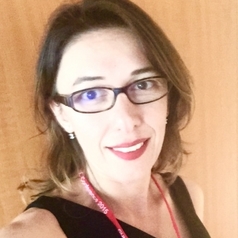Pancreatic cancer is one of the most deadly cancers. It has a five-year survival of just 3%, and a ten-year survival of less than 1%. The prime reason for these depressing figures is that the disease is very difficult to detect in the early stages. By the time it is detected, it is often incurable. But help may be at hand.
Researchers at the University of Washington have developed an app called BiliScreen that can detect pancreatic cancer at the early stages. A build-up of bilirubin – which causes the eyes and skin to yellow – is one of the early indicators of the disease. The app calculates the amount of bilirubin in the whites of a person’s eyes. The user takes a selfie and a machine-learning algorithm – a type of artificial intelligence – performs the diagnosis.
Bilirubin is produced when the liver breaks down old red blood cells. Jaundice, the yellow discoloration of the skin and sclera (the white part of the eyes), results from an excess of this substance. This discolouration is only visible when jaundice is quite severe. However, BiliScreen produces an estimate of a person’s bilirubin level even at levels too low to be detected by the naked eye.
At the moment, the user of the app needs to use a special box (similar to a VR headset) to block out light from other sources, but the makers of the app hope that future versions won’t need this additional equipment.
A clinical study of BiliScreen, involving 70 participants, found that the app has a high sensitivity (90%). This is the ability of a test to correctly identify people with a disease. In this case, 90% of the people with abnormally elevated bilirubin levels were correctly identified. The app also had high specificity, meaning there were few “false positives” – healthy people wrongly identified as having a disease.
BiliScreen can also be used to detect other reasons for jaundice, such as hepatitis and Gilbert’s syndrome, a common, harmless liver condition in which the liver doesn’t properly process bilirubin.
An earlier version of the app – called BiliCam – was used to detect jaundice in newborns by taking snapshots of their skin.
Not a doctor
BiliScreen joins a growing list of apps used for diagnosis, including other cancers. For example, there are a number of apps that screen for skin cancer. Some of these apps use fractal geometry to assess the shape of moles.
A scientific review of these melanoma-detecting apps found that some of them have high sensitivity and specificity (73% and 83% respectively). However, the study found that a diagnosis given by a dermatologist and pathologist, if a biopsy is needed, gives a higher sensitivity and specificity – 88% and 97% respectively.
Although diagnostic apps will never take the place of doctors, they can act as useful early detectors of disease. And, in the case of BiliScreen, they are more convenient and less invasive than the usual test for jaundice, which involves a trip to the doctor and a blood draw. But whether people will be disciplined enough to regularly use a growing range of apps to screen for diseases, when they’re feeling in the peak of health, remains to be seen.
 Pinar Uysal-Onganer does not work for, consult, own shares in or receive funding from any company or organisation that would benefit from this article, and has disclosed no relevant affiliations beyond the academic appointment above.
Pinar Uysal-Onganer does not work for, consult, own shares in or receive funding from any company or organisation that would benefit from this article, and has disclosed no relevant affiliations beyond the academic appointment above.



 Bitwise: Market Underestimates Long-Term Impact of Upcoming Bitcoin Halving
Bitwise: Market Underestimates Long-Term Impact of Upcoming Bitcoin Halving  Samsung Implements Emergency 6-Day Work Week to Combat Slowing Growth
Samsung Implements Emergency 6-Day Work Week to Combat Slowing Growth  Tesla's Flood Resilience Tested by Dubai's Historic Rainfall
Tesla's Flood Resilience Tested by Dubai's Historic Rainfall  Video games at work? It sounds fun, but there are ethical risks
Video games at work? It sounds fun, but there are ethical risks  Railgun Denies North Korean Use, Approaches $1B Volume Amid Vitalik Buterin's Praise
Railgun Denies North Korean Use, Approaches $1B Volume Amid Vitalik Buterin's Praise  Shiba Inu Faces Downtrend, XRP Undervalued, Ethereum Eyes Market Comeback
Shiba Inu Faces Downtrend, XRP Undervalued, Ethereum Eyes Market Comeback  Samsung Touts AI as Game-Changer in Outpacing Apple with Innovative Home Appliances
Samsung Touts AI as Game-Changer in Outpacing Apple with Innovative Home Appliances  Shiba Inu Token Burn Skyrockets, Fueling Hopes for Market Rebound
Shiba Inu Token Burn Skyrockets, Fueling Hopes for Market Rebound  OpenAI CEO Sam Altman's Worldcoin Unveils Human-Centric Blockchain, World Chain
OpenAI CEO Sam Altman's Worldcoin Unveils Human-Centric Blockchain, World Chain  Animoca Founder Predicts Bitcoin to Reach $1M, Not Just as Store Value, at Rio Summit
Animoca Founder Predicts Bitcoin to Reach $1M, Not Just as Store Value, at Rio Summit  Microsoft Exposes Early Russian Influence Efforts Ahead of US Elections
Microsoft Exposes Early Russian Influence Efforts Ahead of US Elections  Amazon Ditches Its ‘Just Walk Out’ Cashierless Shopping Tech, Decides to Offer the System to Other Stores
Amazon Ditches Its ‘Just Walk Out’ Cashierless Shopping Tech, Decides to Offer the System to Other Stores  BMW Offers Up to $13,000 Off 2024 EV Models; Kia's Affordable Electric Cars Set to Compete
BMW Offers Up to $13,000 Off 2024 EV Models; Kia's Affordable Electric Cars Set to Compete  SHIB, BONE Prices Rally: Factors Fueling Memecoin Market Recovery Revealed
SHIB, BONE Prices Rally: Factors Fueling Memecoin Market Recovery Revealed  Senators Push for Stablecoin Regulation to Protect US Dollar Dominance
Senators Push for Stablecoin Regulation to Protect US Dollar Dominance  Tesla Cybertruck Gets Major Upgrades in Exciting Spring Update
Tesla Cybertruck Gets Major Upgrades in Exciting Spring Update  Pepe Coin Climbs 6%: Market Braces for Potential Profit-Booking Selloff
Pepe Coin Climbs 6%: Market Braces for Potential Profit-Booking Selloff 































